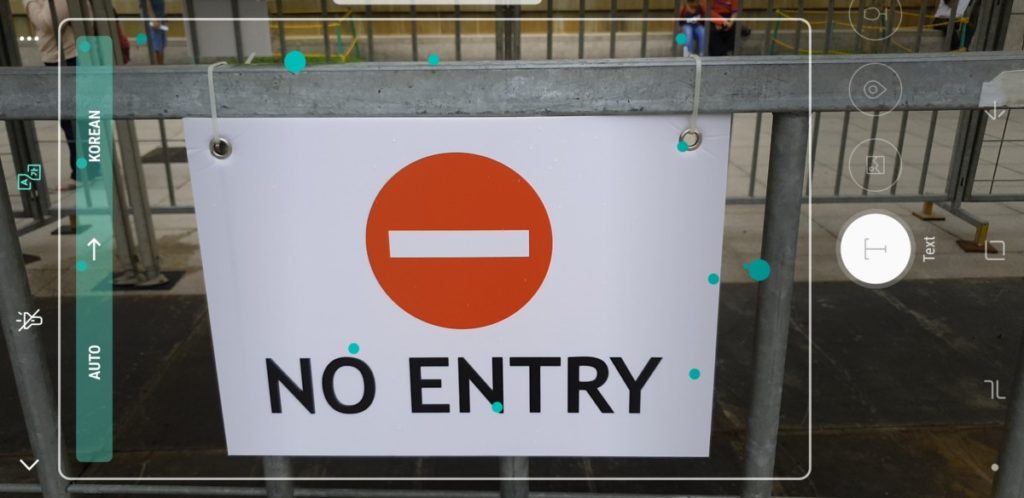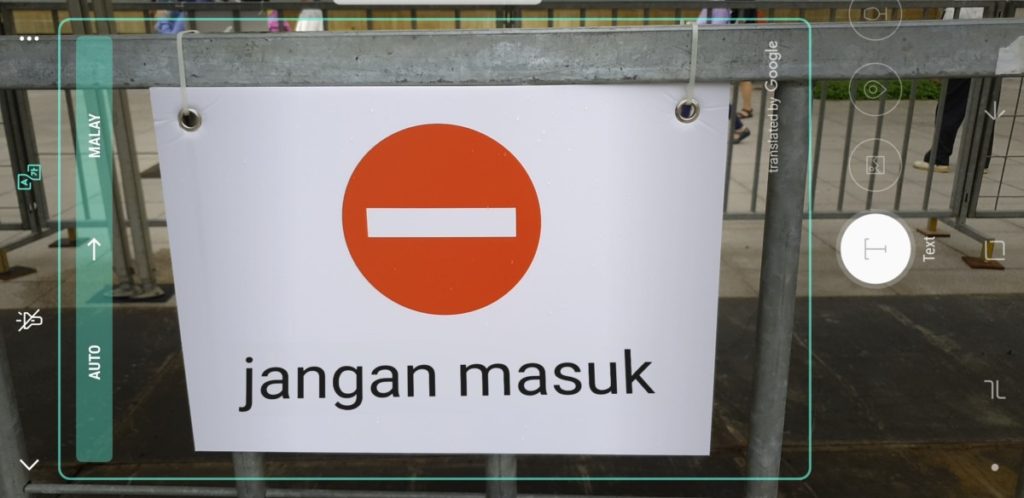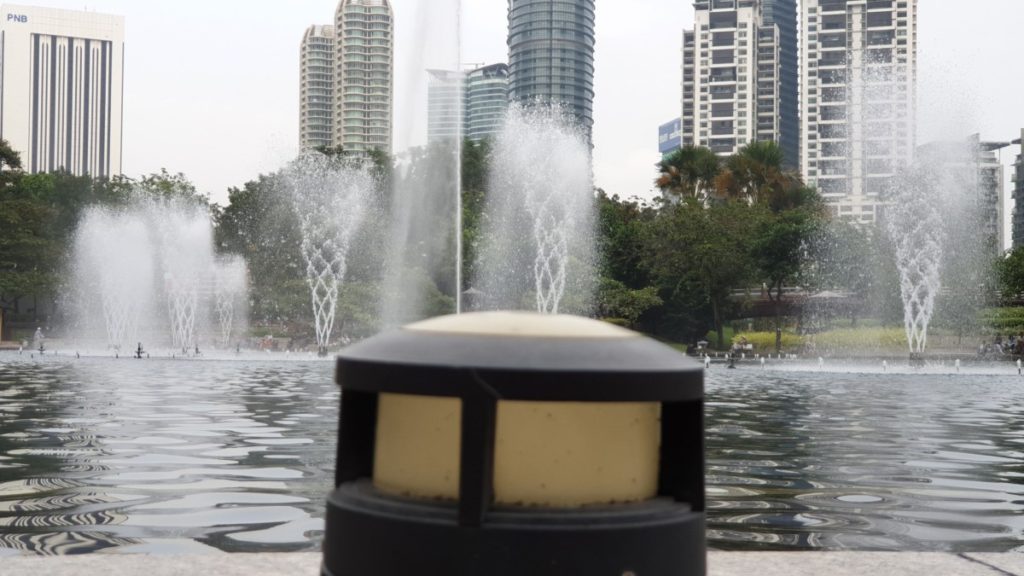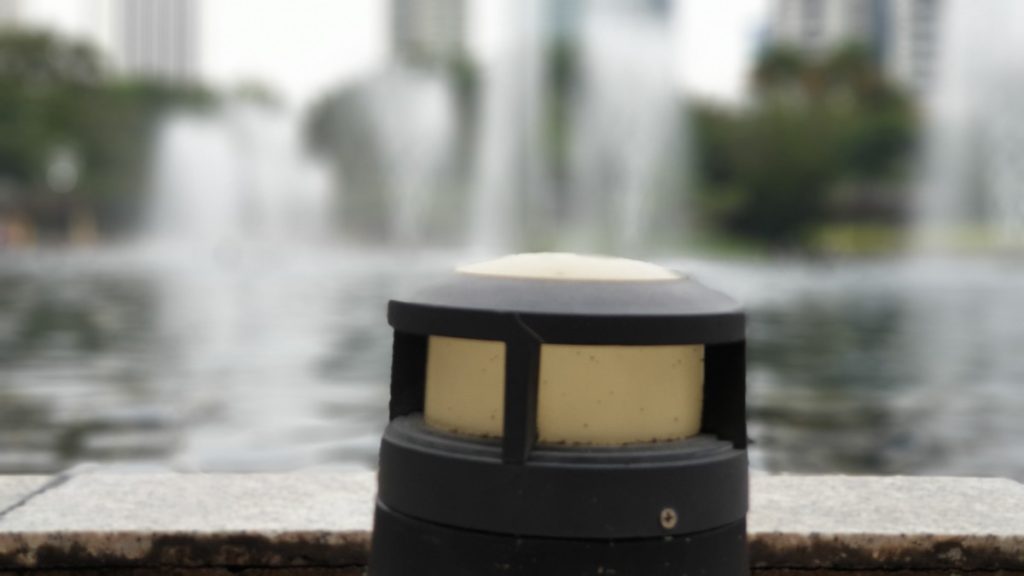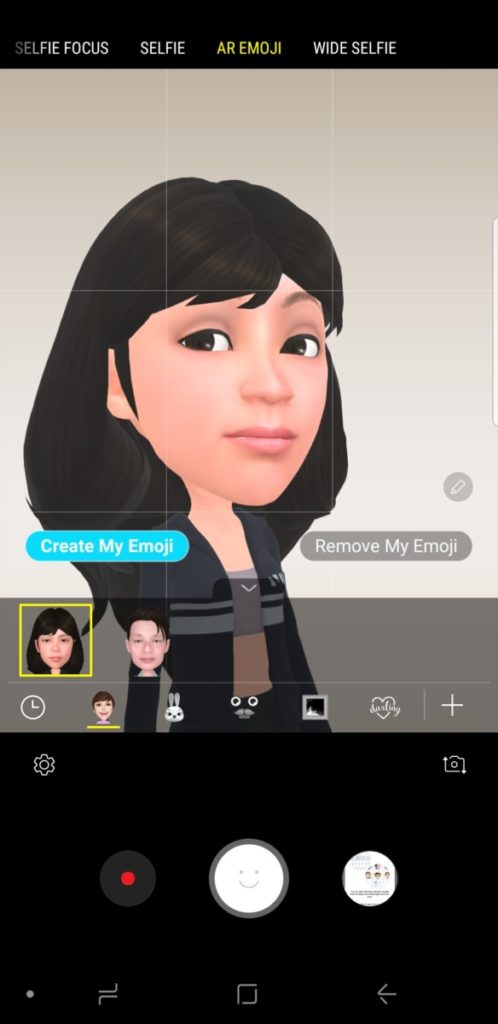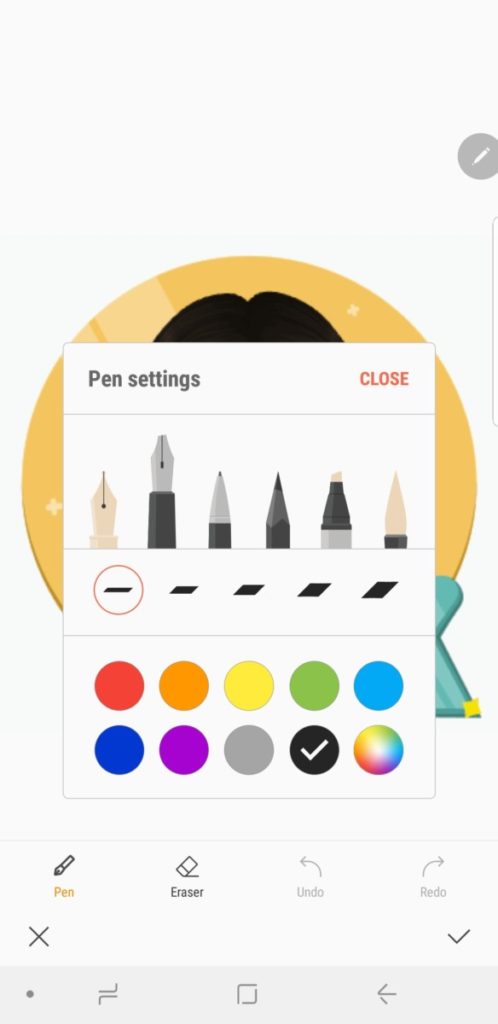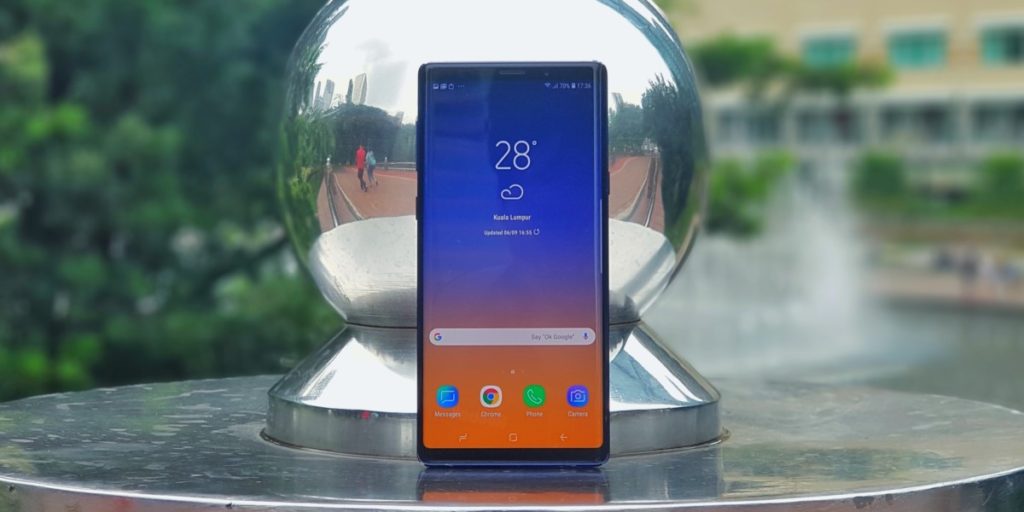
Samsung Galaxy Note9 review – Redefining Excellence
Samsung Galaxy Note9
Table of Contents
-
Design
-
Performance
-
Display
-
Battery Life
-
Camera
-
Value
Samsung Galaxy Note9
Where the Galaxy Note9 trumps the competition is that it truly does not compromise on performance and addresses all the traditional pain points of a smartphone user in a decisive fashion. For your money, it has one of the best displays ever made in a smartphone, scads of storage, excellent cameras with truly outstanding performance from the dual rear camera and a revamped S Pen with innovative features added to it. The fact that it offers true all-day endurance only adds to its appeal. This is, to date, the best phone that Samsung has ever made and one of the best Android phones that money can buy.
Samsung’s eminent line of Note series flagship phones has been, since its inception in 2011, a refined culmination of their finest technologies distilled into a form factor that crams in as large a display as possible with as much of their cutting edge hardware as technologically possible. In the case of Samsung’s latest Note series phone, the Galaxy Note9, they’ve managed to top even our lofty expectations and then some as it truly addresses every pain point of a power user in a decisive fashion.
Externally the Galaxy Note9 doesn’t wander too far aesthetically from the Galaxy Note8 and retains a similar form factor in the form of a rectangular chassis with gentle curves all around and a mirrored backplate hewn of glass. The Galaxy Note9’s front 6.4-inch Quad HD+ Super AMOLED display has even slimmer bezels than its predecessor, making the front almost all touchscreen real estate with nary an annoying notch in sight, an impressive 18.5:9 screen aspect ratio and a razor sharp 515ppi.

Put together side by side, the most obvious way to tell them apart is that the Note9 strategically moves the fingerprint reader down to just below the dual camera array to form a T-shape of sorts on the backplate, which makes it much easier to find by touch than the Galaxy Note8.
That aside, button placement is similar with a volume rocker and Bixby button on the left and a power button on the right. The base hosts a 3.5mm audio jack, a USB Type C port and the downward firing speaker of the stereo speaker array with the other speaker emplaced near the upper portion of the Note9 next to the selfie cameras. The top of the phone comes with a hybrid SIM card slot that allows you to either plonk in two SIM cards or one SIM and another microSD card to augment the memory up to 512GB.
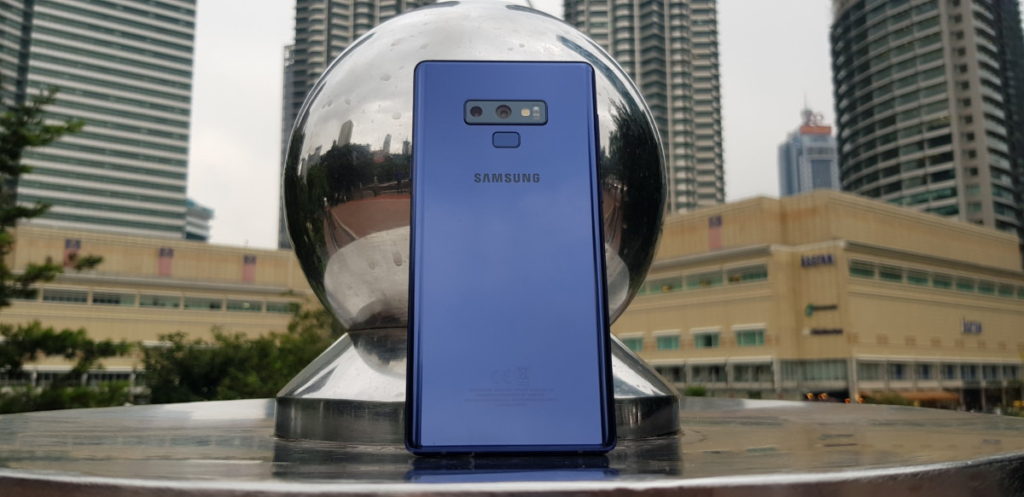
Our test unit of the Galaxy Note9 was the 6GB RAM and 128GB storage variant but you can, assuming you purchase the high end 8GB RAM /512GB storage variant, max out the storage to a whopping 1TB with a 512GB microSD card; impressive overkill by any measure of the word but something handy to have around as it future-proofs the phone for quite a few years down the line.
Externally, our test unit came in a shade of Ocean Blue and, unlike the rest of its brethren, a differently shaded S Pen stylus which came in bright yellow complemented with blue trim. The other two colours coming to Malaysia, Midnight Black and Metallic Copper come with S Pens in matching colours if you’re more of a traditionalist.
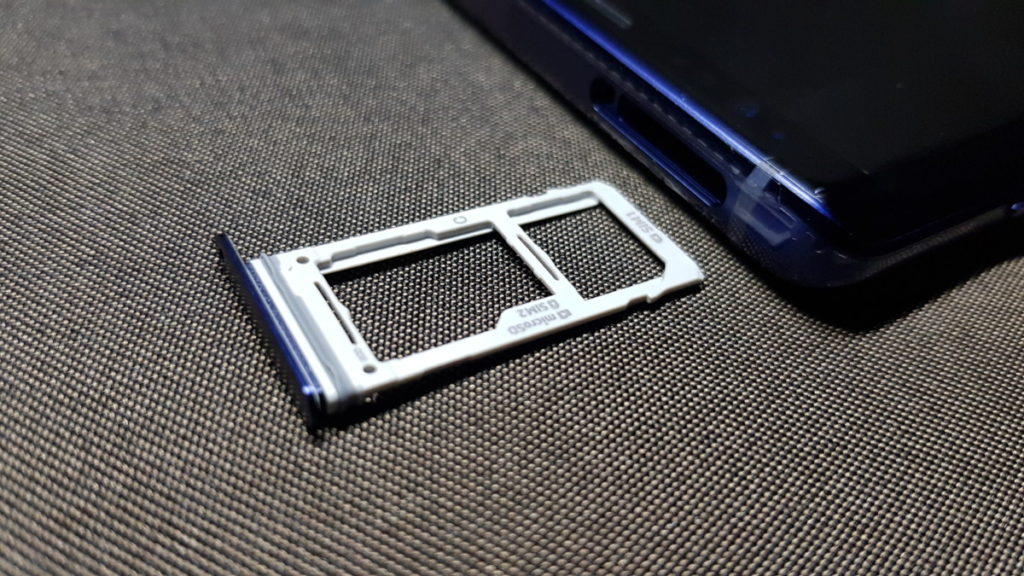
The Galaxy Note9 with its hybrid SIM card slot
As one would expect of Samsung’s finest hardware, the Galaxy Note9 looks and feels posh with a wonderful, even heft and a luxurious feel when held. The buttons are hewn of metal with a beautiful tactility about them and raised just enough out of the chassis to make them easy to find by touch.
Unfortunately, the mirrored finish is also a fingerprint magnet and requires frequent wipedowns to remain pristine unless you opt to use the bundled TPU casing which goes a long way to protecting the Note9 from mishaps and greasy fingers.
While it’s slightly heavier by 6g than the Note8 and slightly thicker, it’s indiscernible to the touch as the gently rounded edges make it very wieldable one handed. In exchange, the Note9 packs much better hardware and also has, if you’re wont to quibble, a larger display too by 0.1-inches with only a minor compromise in pixel density at 516ppi versus the Note8’s 521 ppi.
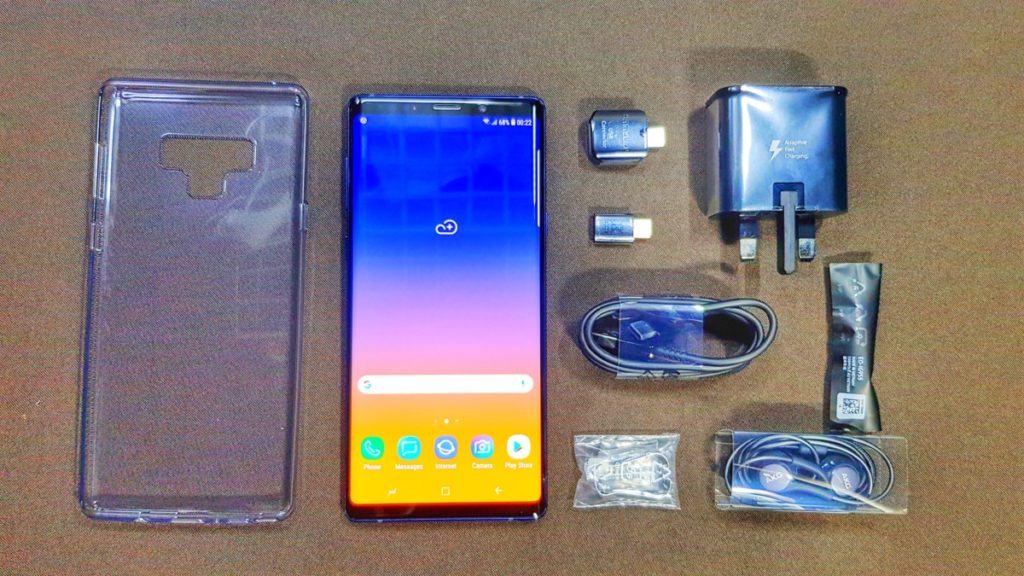
In terms of packaging, the Galaxy Note9 ranks with the best of them with exceptionally classy presentation indeed. Packed with the phone are quite a comprehensive list of goodies that include a soft TPU casing form fitted to the phone, a USB to USB Type C adaptor, a micro USB to Type C adaptor, a fast charging 5V/2A travel adaptor along with a paired cable and a pair of Samsung’s own AKG earbuds. As far as bundled earbuds go, Samsung’s AKGs are one of the better ones out there with decent sound out of the box that would put to shame most bundled buds out there.
For a more thorough look and a breakdown of every item in the box, swing by our Galaxy Note9 unboxing feature here.
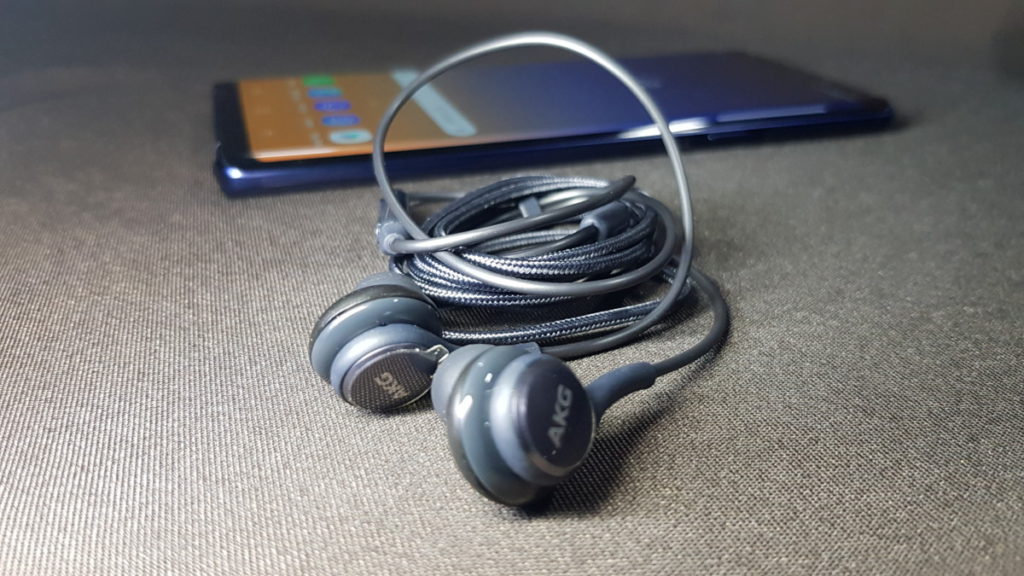 Right out of the starting gate, the Galaxy Note9 makes quite an impression in terms of its exceptional build quality and the goodies bundled with the box but as they say, it’s what’s under the hood that counts.
Right out of the starting gate, the Galaxy Note9 makes quite an impression in terms of its exceptional build quality and the goodies bundled with the box but as they say, it’s what’s under the hood that counts.
Galaxy Note9 specifications and performance
Globally, the Galaxy Note9 is armed for bear with the best hardware that Samsung can muster from their foundries. For Malaysia, the Galaxy Note9 comes with an Exynos 9810 SoC and, as mentioned, two storage configurations – 6GB RAM and 128GB storage or a mammoth 8GB RAM and 512GB storage with our test unit being the former.
In general a Galaxy Note series phone of a given year will also usually use the same processors as its Galaxy S brethren in that same year.The Exynos 9810 64-bit octacore processors in the Galaxy Note9 first saw service on the Galaxy S9 and S9+ earlier this year and proved to be swift, powerful and reliable with the chipset built on the 10nm process and featuring a quartet of M3 cores clocked at 2.9GHz to handle the heavy lifting and a quartet of Cortex A55 cores clocked at 1.9GHz to handle general grunt work.
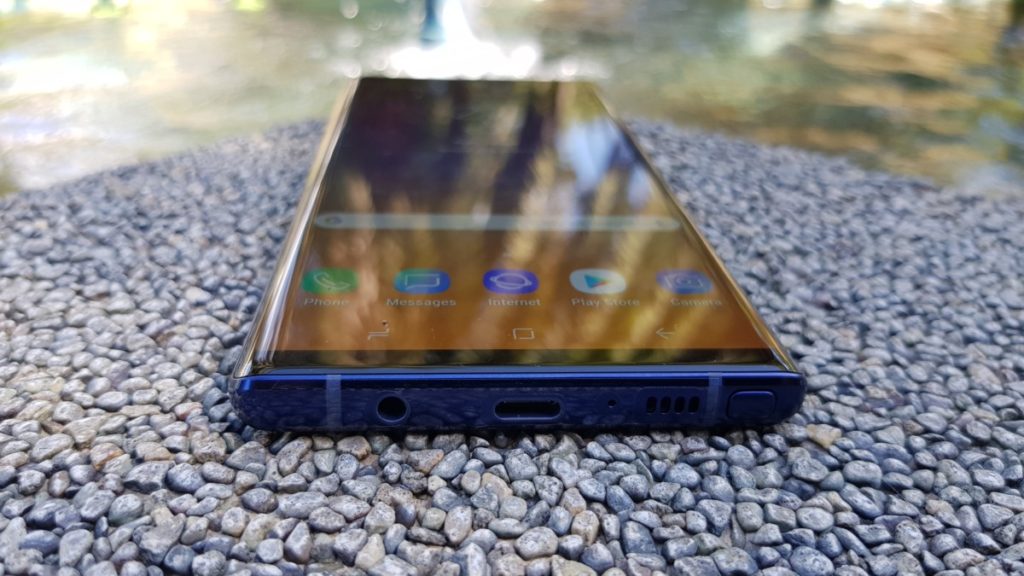
The Galaxy Note9 still has an audio jack and it’s IP68 water resistant to boot.
While competitors can attempt to try to match it in specifications, the Note9 has quite a few additional extras under the hood to yield sustained and consistent performance under heavy workloads. In general, there’s not a lot of room in a smartphone, regardless of model or make and smartphone engineers have to fight for every single millimeter of space to cram in all the vital components that make it function. Even with all this hardware crammed in, Samsung still manages to make room for an audio jack and more besides.
All that stuff in close proximity to each other as well as the heat that comes from working on taxing demands from the processor like gaming and the like means that things can get hot. Fast. To address this concern directly, Samsung has managed to cram in what they call a Water Carbon cooling system, in effect a large, flat looking gold-coloured large copper heat spreader within the chassis to dissipate the heat in a more efficient fashion that is about triple the size from the original used in the Note8 and is commensurately thrice as efficient. The end result is that the Note9 has the ability to stay relatively cool while continuing to deliver consistent, sustained performance under situations like an extended gaming match. For a more in-depth look at how this works, check out this extensive feature on the Note9’s processor and its Water Carbon cooling system.
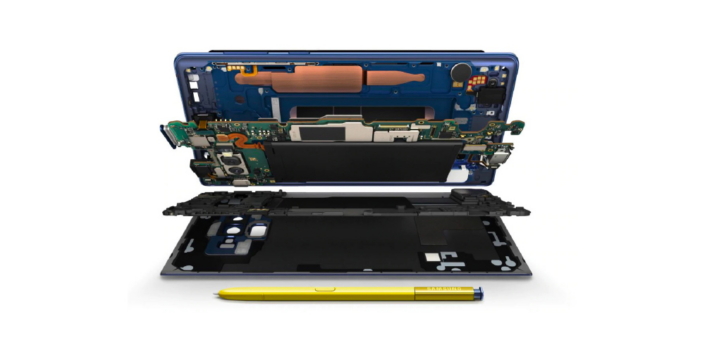
No Galaxy Note9s were harmed in creating this schematic. The Water Carbon Cooling system is the copper coloured section. Image: Samsung
On that note, the phone has also been intended for gaming as well as Samsung has scored a fait accompli by having a temporary exclusive on the portable version of Fortnite on their phones for a month or so before it enters general release on the Google Play store.
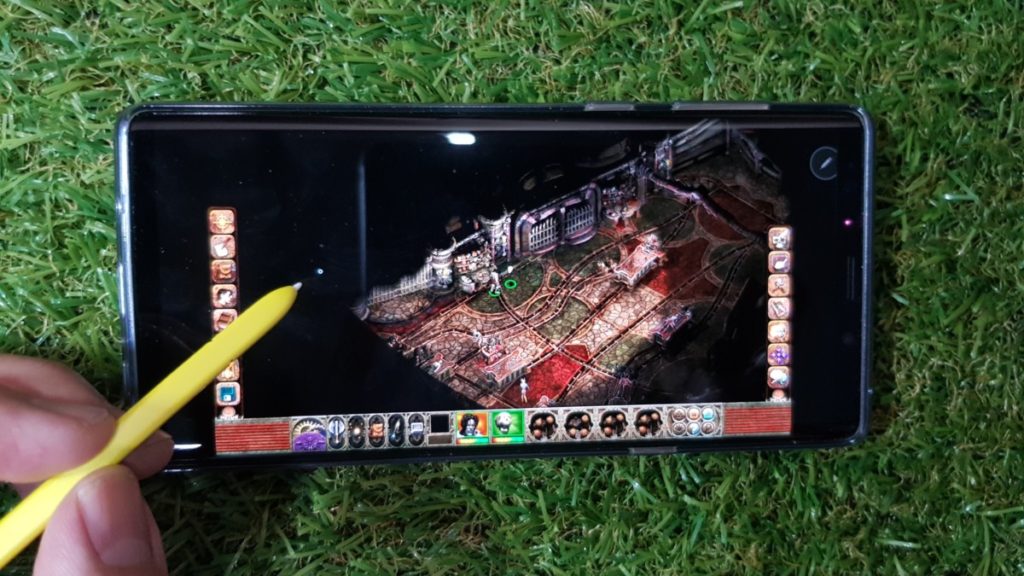
Planescape: Torment with an S Pen makes for an interesting gaming experience indeed on the Galaxy Note9
In terms of synthetic benchmarks, the Note9 handled them all with deft aplomb and tackled everything thrown at it like a champ. In Antutu 3D, it yielded an impressive score of 239,289 points. In PCMark Work 2.0, which handles its capability under work scenarios, it yielded a score of 5,280.
In Geekbench, the Note9 snagged a score of 1,953 in single-core operations and a whopping 6,280 in multi-core operations. In 3DMark Sling Shot Extreme Open GL ES 3.1, the phone got an impressive score of 3,334 while in Sling Shot Extreme Vulkan it got a score of 2,936. This outdoes its predecessor, the Note8 by quite a margin in benchmarks bar an anomalously minor dip in PCMark Work 2.0.

The Galaxy Note9 has a unique DeX mode that fires up a desktop interface by mere provision of a HDMI cable and a monitor.
Under actual field conditions, the Galaxy Note9 did everything expected of it and more with nary a bit of lag. It handled its signature game Fortnite on the highest settings in a silky smooth fashion along with Asphalt 9 and Hitman: Sniper.
Even after a couple of hours of gaming, the Note9 didn’t even break a beat nor did it heat up beyond a mildly warm sensation and continued running in a consistently swift fashion. Multiple open browser windows, a slew of videos, emails and even quick video render from a recent family outing and it still kept ticking along nicely.
Where the Note9 impresses is its luscious and vibrant Super AMOLED display that’s capable of displaying pin-sharp imagery onscreen at Quad HD+ resolution. By default, it’s set to Full HD+ out of the box but it’s a mere matter of toggling the settings to unlock its full potential and gazing upon it at maximum resolution is a glorious sight to see with exquisitely deep blacks, brilliant whites and superb colour rendition across the board with excellent viewing angles and great clarity, even under outdoors under daylight.
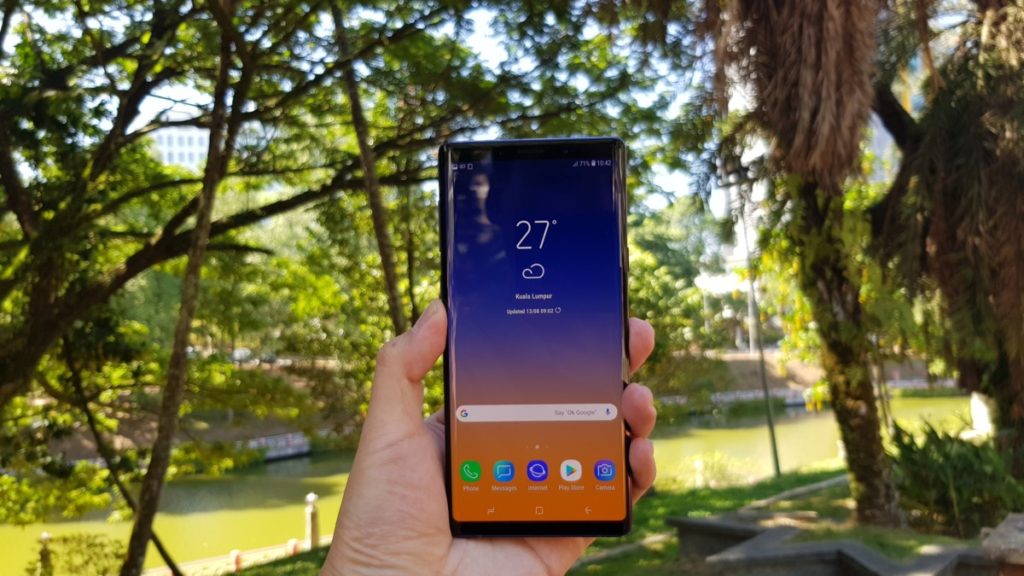
Better yet, the Note9 offers astounding colour rendition and accuracy with a rated 113% coverage of DCI-P3 and 142% for the sRGB colour space. The display is also rated HDR10 capable and, to wit, has won acclaim from DisplayMate for its superior handling of detail, colour and performance. Luc Besson’s titular masterpiece The Fifth Element in 4K rendered up beautiful hues and every bump and crease on Bruce Willis’ pate was clearly apparent on the Note9’s display.
Fortnite was a delight as well with smooth frame rates even after a several hours of play while the dark, hand-painted vistas of Planescape: Torment were rich with detail and lustrous hues onscreen.When watching YouTube, the Galaxy Note9’s display proved a treat with excellent colour rendition and detail, no surprise seeing as it’s been certified as a ‘Youtube Signature Device’. A lofty achievement seeing as getting the certification requires a phone to support HDR, 4K decoding and over 60fps video playback along with a host of other demanding requirements. Fortunately, The Galaxy Note9’s 6.4-inch, 2,960 x 1,440 Super AMOLED touchscreen display knocks it out of the ballpark. Even when viewing under direct sunlight, the Note9’s screen remains viewable and clear.
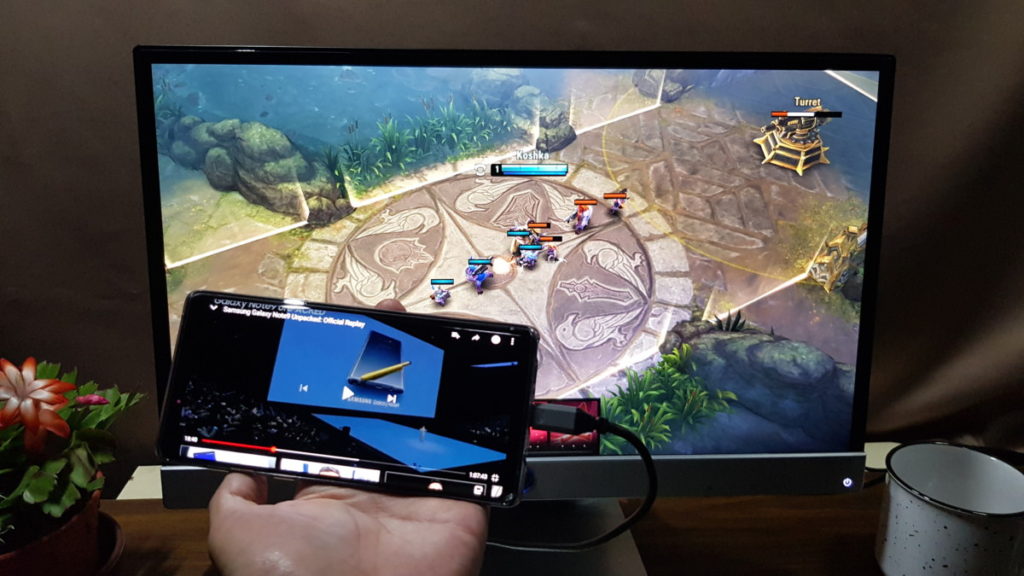
DeX mode offers multitasking with the ability to do one thing on the Galaxy Note9 and another on the display.
Complementing the luscious visuals are a pair of stereo speakers tuned by AKG with Dolby Atmos Sound tech for good measure. Joanna Wang’s soulful rendition of ‘Vincent’ was rendered full justice with clear vocals while subtler tracks like Claude de Bussys’ Clair de Lune were handled beautifully each gentle stroke of the ivories.
In a particularly appropriate display of poetic justice, the phone showcased Sia, Diplo and Labrinth’s titular single Thunderclouds that acted as the signature theme song to introduce the Galaxy Note9 at the global Unpacked event in a particularly epic fashion. Gaming was a treat as well as it handled frenetic firefights in Modern Combat Versus with distinct enough sound separation to detect incoming ordnance. Even when cranked up to maximum, the speakers proved loud enough to fill a small room and audio remained crisp without distortion. On the gaming front, the Note9 did not disappoint. The aforementioned Fortnite was a wonderful experience on account of the responsive, beautifully rendered imagery on the Note9 in tandem with the stereo speakers.
The Galaxy Note9’s improved Bixby 2.0 aims to offer more natural conversations with context and at launch, the phone was able to take enquiries and, assuming you have a data connection, identify a vintage of wine, figure out nearby hotspots based on an augmented reality map and do modest live translations of signage. The last one comes in especially handy for tourists on the road. The key advantage on offer with Bixby here is that it allows for an exceptional degree of control over the Galaxy Note9. You are able to alter screen brightness or volume with your voice alone and control a host of other phone settings with the power of your voice alone.
- The original sign when viewed by Bixby on the Galaxy Note9
- The same sign translated into Bahasa by Bixby
Very often, phones are often concessions to practicality, production schedules and cost with one or more compromises here and there that detract from the whole affair but it is hard to find fault with the Galaxy Note9’s performance. On a performance standpoint, it truly excels in every task asked of it from work to gaming and more. On the work front, the Note9 has even more tricks up its sleeve with its DeX mode and S Pen.
Galaxy Note9 S Pen and DeX mode
The S Pen stylus on the Note9 has a significant upgrade that outdoes its predecessors – it now has Bluetooth Low Energy (BLE) connectivity built in, allowing it to act as a remote control. Basically, there’s a small super capacitor within the stylus itself that allows for about half an hour of use or about 200 clicks when extracted from the Note9 and which recharges in about 5 or so minutes.
Via a series of long presses, single and double presses on the sole S Pen button, you’re able manipulate a variety of apps. So far, the stylus works with the camera, the picture gallery, the voice recorder, Google chrome and, especially for business suits – Powerpoint.

The creative possibilities are immense. You are able to take selfies or pictures without having to hold the Galaxy Note9 which comes in handy if you’re travelling solo. You are now able to record or pause the voice recorder in style and, in tandem with DeX mode (more on that later), you’re able to control PowerPoint presentations like a boss. Unfortunately, the apps available that the S Pen can interact with are initially somewhat limited at the moment to the aforementioned half dozen or so for now but they cover the essentials but more are on their way.
This is on top of the usual tasks expected of the S Pen of course. The stylus is responsive and precise, allowing for pinpoint input and enabling you to draw, annotate, sketch and doodle as your heart desires. The Stylus also allows you to capture bits of text on the screen, perform a long-screen capture such as if you’re trying to screencapture a huge website and you’re even able to translate short words or phrases by putting your S Pen over it; assuming you have data of course.
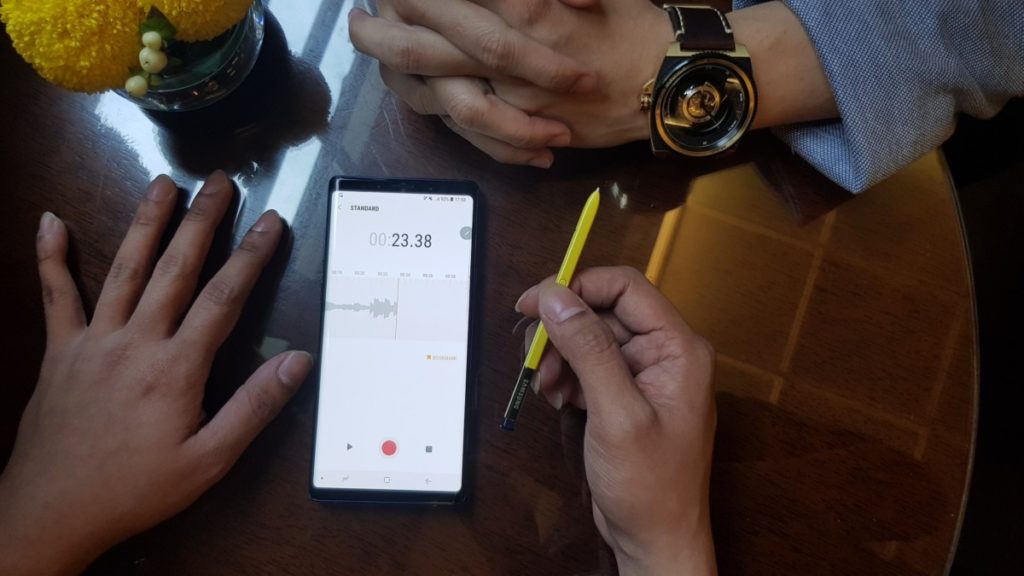
Naysayers will wonder at the utility of a stylus but the creative and work possibilities offered by the S Pen of the Note9 are a real game changer, albeit one that cannot be fully appreciated by simply holding the phone in a store for a few minutes. You’ll need to use the Galaxy Note9 several weeks at a minimum before you can get even an inkling (pun not intended) of what the S Pen is capable of doing.
The other interesting aspect of the Note9 expands on something the Note8 was able to achieve in a somewhat piecemeal fashion – DeX mode. For the uninitiated, DeX mode was essentially a desktop mode that allowed you to work in a Windows-like environment complete with folders, right-clicking and the like that debuted on the Galaxy Note8. It had a substantial logistics footprint though as you still needed to purchase DeX Pad or DeX Dock along with a monitor, mouse and keyboard for it to work.
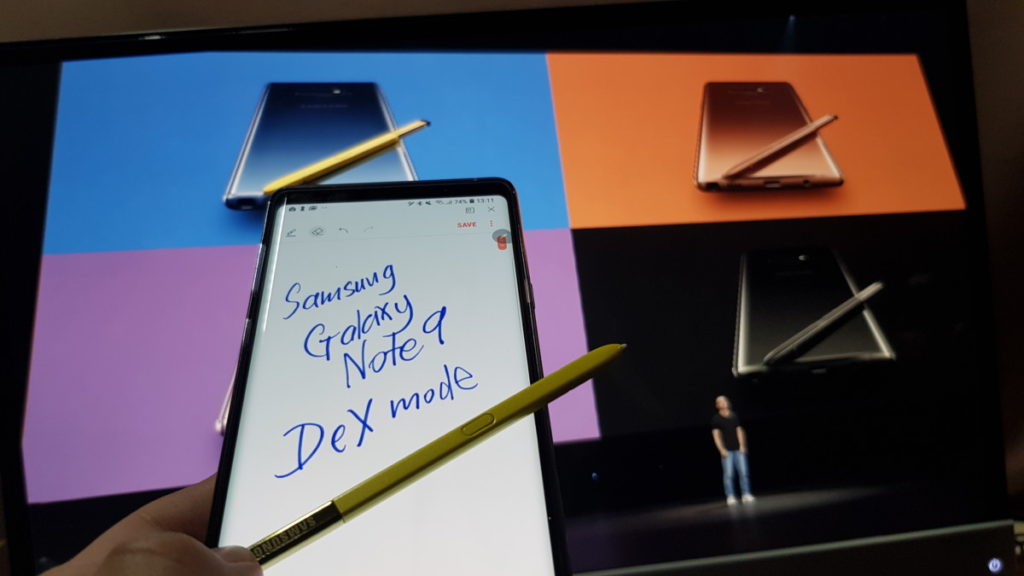
This time around, all you need is a HDMI connector – even a third party one will do – to activate DeX mode with the Galaxy Note9. The only downside here is that there’s no way to charge the Note9 as the Type C port at the base of the phone is taken up by the dongle unless you plonk it on a wireless charger at the same time that you’re using it or you have a powered connector. Once in DeX mode, you’re also able to use the display of the Note9 as a touchpad and a keyboard which means all you need is a HDMI cable and a monitor.
In DeX mode, you’re able to accomplish a good deal with the added amount of screen real estate in regards to spreadsheets and word processing though this is tempered by the fact that not all apps are compatible with DeX mode. Some can only run in a windowed mode while others won’t run at all.
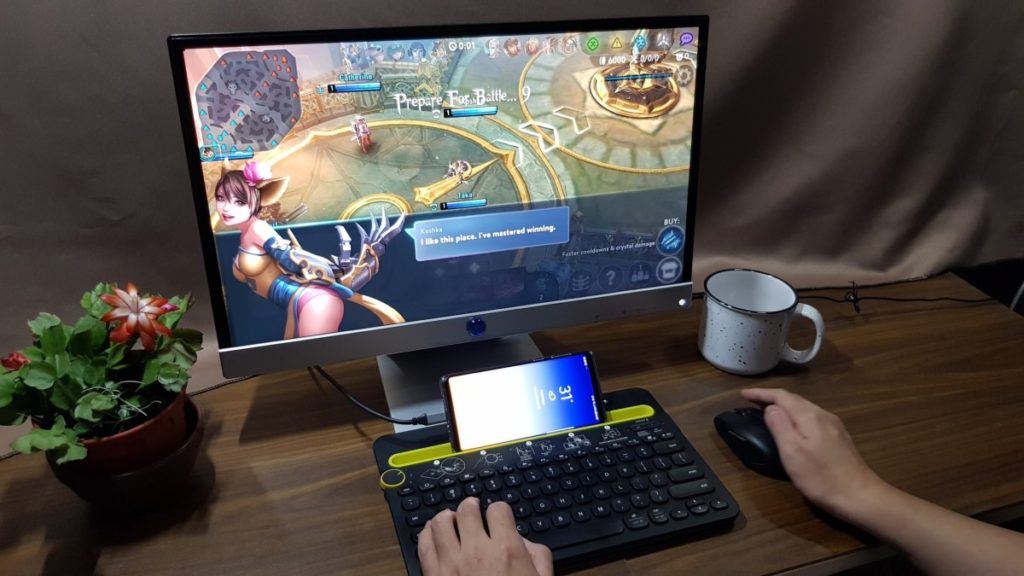
The essentials – Word, Excel and PowerPoint along with Adobe Photoshop Lightroom, Chrome, YouTube and Twitch just to name a few run perfectly fine and several games run a treat like Vainglory and Fortnite. The added advantage here is that you’re able to run apps off the phone while doing another thing on the paired up display which opens up options for multitasking.
As much as it would seem otherwise, you’ll still need the DeX Dock or DeX Pad if you’re a power user. If you use a normal or third party HDMI adaptor, you’re limited to a maximum of five simultaneous desktop windows on DeX mode as well as a cap of 1080P resolution.

In lieu of a mouse, the Galaxy Note9’s display can be used as an ersatz touchpad.
By docking it to either DeX dock, you’re able to max it out at an impressive twenty windows at a time and enjoy 2160P resolution, assuming you have a suitable display of course.
By adding a modest amount of DeX functionality without the need to lug around a clunky Dex dock, the Note9 becomes even more useful for power users looking to travel light. It’s still quite aways from becoming a true laptop replacement but Samsung’s implementation of DeX is the closest so far that we’ve seen to a working, viable desktop mode on a phone and one with an extremely promising future. For an even more intimate look at what DeX mode can do, swing by our feature here.
Galaxy Note9 Dual Aperture camera
The rear cameras of the Note9 consist of a horizontally arrayed pair of 12-MP dual cameras, both of which have optical image stabilisation(OIS) to ensure judder free footage be it snaps in JPEG Or RAW and videos in up to 4K resolution as well as silky smooth 960fps slo-mo HD video. We have also covered the cameras in even more detail in our feature that shares its capabilities here.
One of the rear cameras integrates their Dual Pixel aperture tech which mechanically alters the aperture from f/1.5 for low light shots to f/2.4 for brightly lit conditions. The other lens comes with 2x optical zoom. Paired up together, both cameras allow for a Live Focus mode that pleasantly defocuses the background while keeping the subject in sharp focus.

Savvy pundits familiar with Samsung issued hardware will likely extrapolate that this is somewhat akin to the Galaxy S9+’s rear camera setup but the Note9 is a slightly different beast indeed as it integrates some rather intelligent algorithms in the form of their Scene Optimiser mode which selects one of 20 existing subject-specific settings and picks the best one to use along with their Flaw Detection mode that checks if a subject is blinking or if the shot is blur and then suggests you to reshoot it accordingly.
- Live Focus deactivated on the Galaxy Note9
- Live Focus dialled to maximum on the Galaxy Note9
With both Scene Optimiser and Flaw Detection mode in place, the Note9 made for a very competent point-and-shoot with shots filled with scads of detail and excellent colour rendition even under challenging low light conditions.
Occasionally, Scene Optimiser ends up with the odd false positive or two but for the most part, it’s spot on. Rear camera performance is otherwise excellent and you’re also able to take 960fps slo-mo video as well as luscious 4K video too with excellent results.
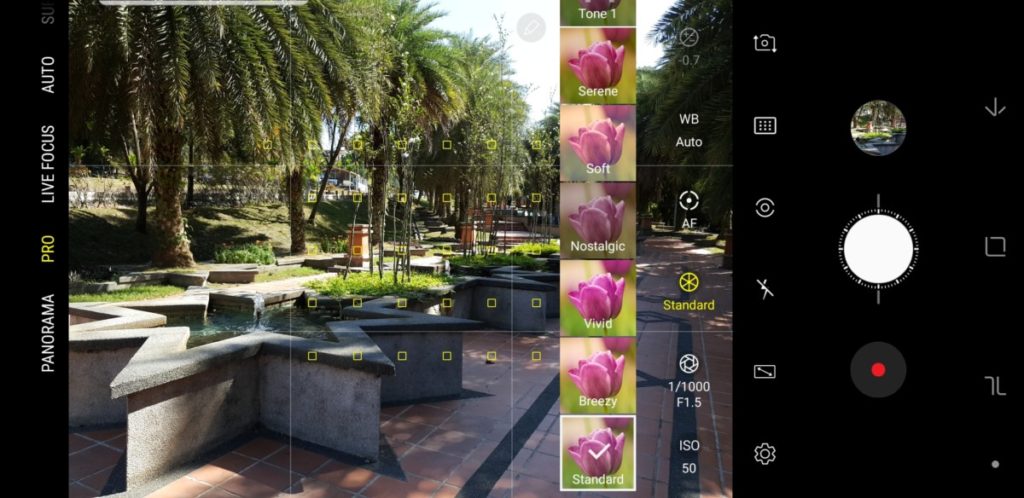
The Galaxy Note9 offers a full array of options including filters aplenty, a full featured manual mode, AR Emojis and more.
The front selfie camera lacks OIS but it includes auto focus, which is somewhat of a rarity in front-facing cameras. The bright f/1.7 aperture offers some of the best selfie snaps seen on a phone.
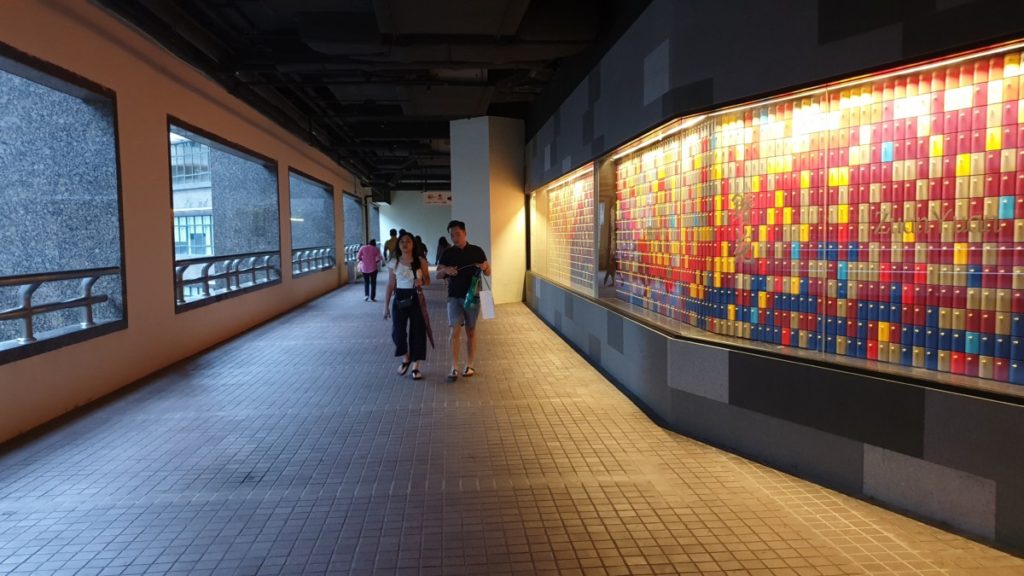
Darkness and Light. Captured near dusk on auto settings with the Galaxy Note9.
The cameras, both front and rear are also capable of creating AR Emojis which are caricatures generated off a snapshot of a person. They are whimsical additions to the phone and can even be further customised with messages via the S Pen. For more details on how you can do this, swing by our feature on combining the AR Emoji and the S Pen stylus here.
Where the Note9 takes things up a notch is that you can use the S Pen as a remote shutter. You can actually use it to trigger the front or rear camera and even video too as needed by simply pressing the button. With a range of about ten metres, the S Pen comes in very handy for large group shots or if you’re travelling solo and need a wide-angle selfie. W

The Galaxy Note9 is capable of astounding close-ups like this shot of ants on a budding flower.

An impromptu moment with a grasshopper

Scene Optimiser helps to make food look much tastier as this shot of fried noodles would attest to.

A low light shot of the office mascot. Even with dim lighting the Note9 is capable of capturing things like the fur and paws with crisp detail.

A beautiful shot of a ferris wheel at dusk with the Galaxy Note9 Credit: Nowis
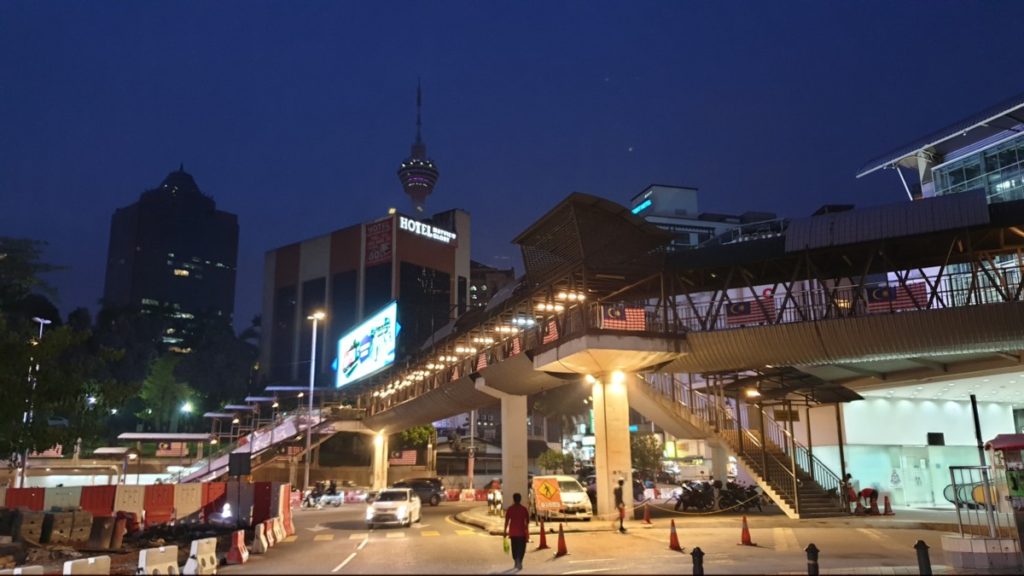
A low light shot of downtown Kuala Lumpur with the Galaxy Note9 and Scene Optimiser on captures the vibrance and energy of the city.

A breathtaking shot at dusk of a cityscape with the Galaxy Note9


A scrumptious bowl of laksa enhanced with Scene Optimiser mode on the Galaxy Note9 Credit:Nowis
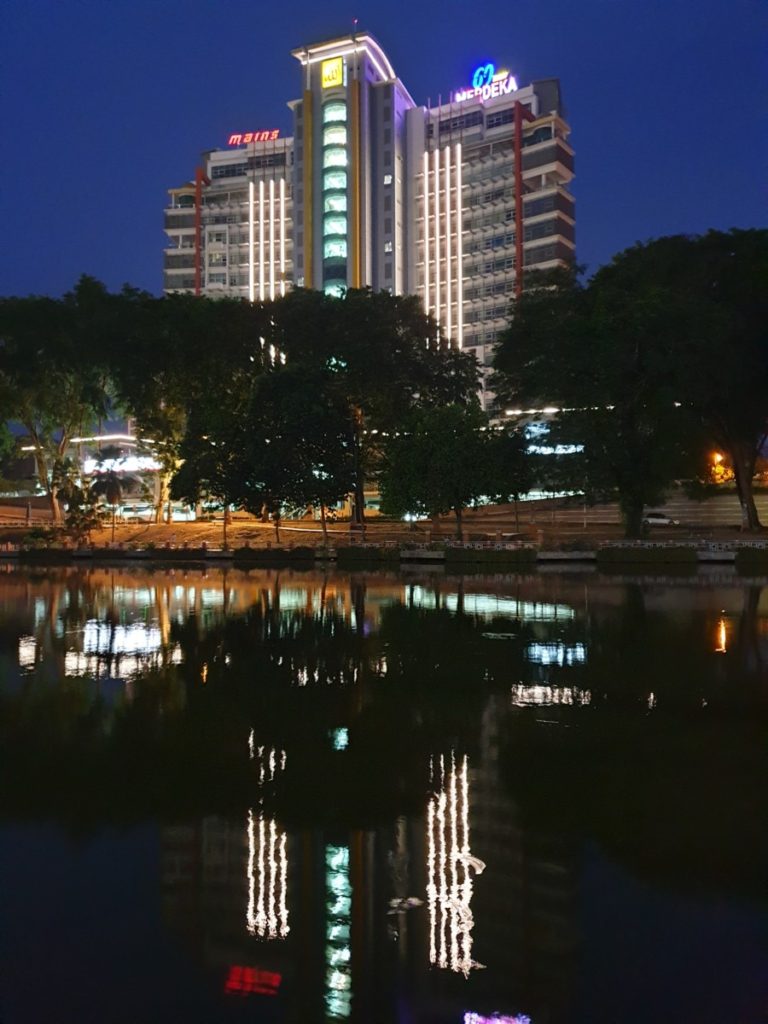
Low light shots are not a problem with the Galaxy Note9 as this shot after nightfall shows. The individual windows in the building in the background can still be seen along with scads of detail.
Galaxy Note9 battery life, price and conclusion
As advertised on the proverbial tin, the Note9 has the largest battery capacity seen in a Note series phone at 4,000mAh along with both wired and wireless fast charging support. With extensive heavy use, with data on all-day from dawn to sundown and intermittent use if Wifi, screen brightness set to auto at maximum resolution, heavy use of social media, heavy gaming for a good couple of hours and quite a bit of camera as well as video use, there was more than enough juice to last you the commute home.
More frugal users will likely experience more than a day’s worth of power and there’s a host of low power options if you’re really heading out to the boondocks. Charging it is a pretty nippy affair with about an hour and 40 minutes or so to get a full charge from a dry battery which is fast seeing the size of the Galaxy Note9’s battery.
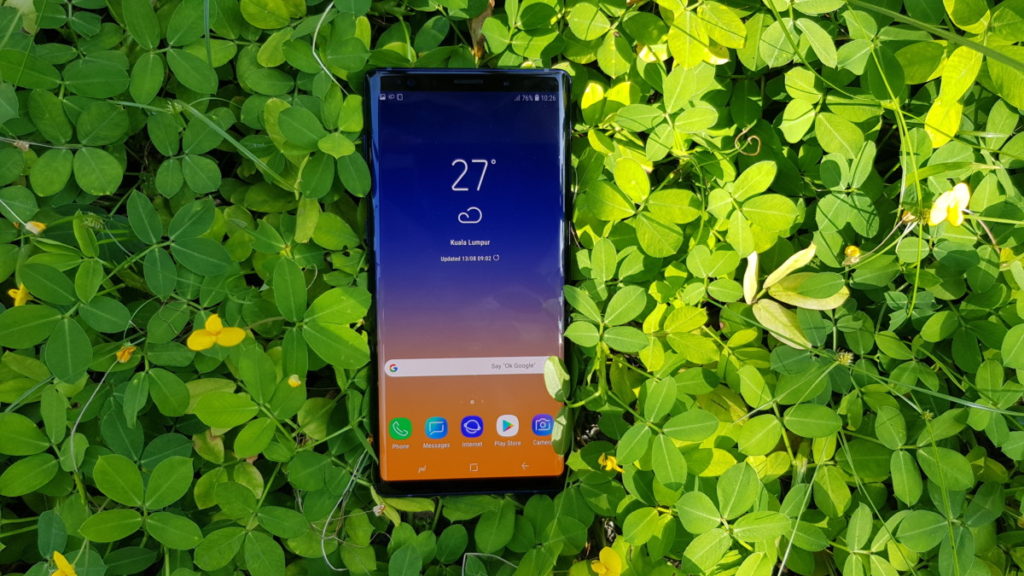
Granted, the Galaxy Note9 has a somewhat conservative design that doesn’t break new ground but for its intended demographic of power users, frippery usually isn’t on the call sheet.
Where the Galaxy Note9 trumps the competition is that it truly does not compromise on performance and addresses all the traditional pain points of a smartphone user in a decisive fashion. For your money, it has one of the best displays ever made in a smartphone, scads of storage, excellent cameras with truly outstanding performance from the dual rear camera and a revamped S Pen with innovative features added to it. The fact that it offers true all-day endurance only adds to its appeal. This is, to date, the best phone that Samsung has ever made and one of the best Android phones that money can buy.
Specifications
Price RM3,699 (6GB RAM/ 128GB storage) RM4,599 (8GB RAM/ 512GB storage)
Display 6.4-inch Quad HD+ Super AMOLED Infinity display
Processor Exynos 9810 octacore
OS Android 8.1 Oreo
Memory 6GB RAM/ 128GB storage + hybrid SIM card (up to 512GB)
Camera 12-MP w/ Dual Aperture (f/1.5 – f/2.4) + f/2.4 w/ 2x optical zoom + OIS (rear) / 8-MP w/ f/1.7 +autofocus
Battery 4,000mAh
Size/Weight 161.9 x 76.4 x 8.8 mm /201g
What we liked Beautifully vibrant and sharp display, exceptionally powerful hardware, impressive battery life, superb cameras, S Pen has innovative features.
What we didn’t Casing is still a fingerprint magnet, needs a learning curve to truly master every trick available, conservative design.
We say Samsung’s Galaxy Note9 soundly thumps all comers with chart-topping specifications, amazing cameras, a revamped S Pen stylus with new remote control features along with stunningly good battery life. The Galaxy Note9 does not come cheap but you’re getting the best Android phone that money can buy.

